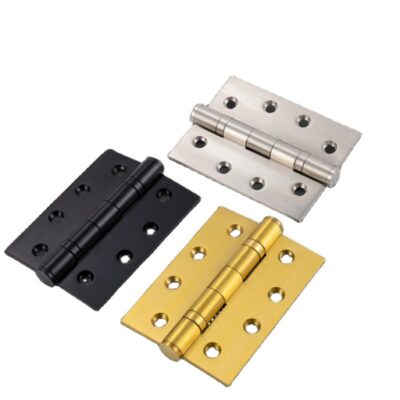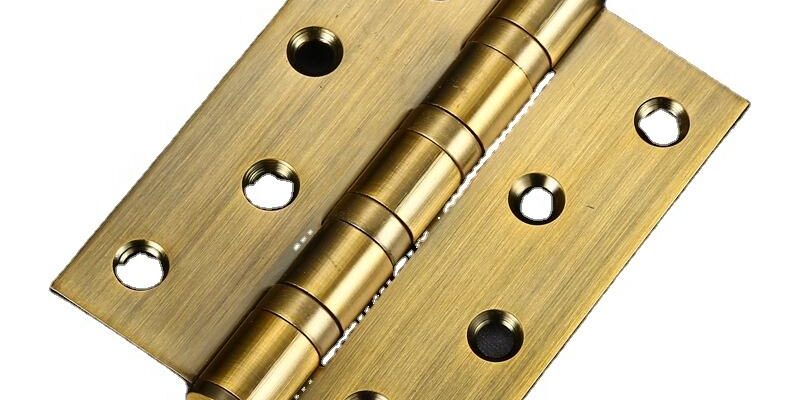🧠 Why Tolerances Matter in Cabinet Hinge Design
In mass furniture production, small dimensional errors can multiply into major quality issues. A 0.5 mm offset in overlay or gap can lead to misalignment, squeaking, or uneven closure—especially in modular kitchens and retail cabinetry.
To keep tolerances consistent, buyers must rely on verified Cabinet Hinges Manufacturers who design each hinge around controlled motion paths and repeatable geometry.
Overlay defines how much the door covers the cabinet frame, while the gap determines spacing between doors or between door and carcass. Both must work together with hinge cup depth, arm length, and mounting plate thickness to achieve the desired motion curve.
⚙️ Key Parameters Affecting Overlay and Gap
The overlay and gap dimensions are governed by three mechanical variables:
-
Hinge arm geometry: Determines the door’s swing arc and offset.
-
Mounting plate height: Alters the overlay incrementally—usually by 1.5 to 2.0 mm steps.
-
Cup drilling position: Affects both overlay and internal clearance.
A high-quality soft-close hinge integrates these tolerances with damping technology to ensure consistent closing force. Ideally, the gap should be between 2–3 mm for standard cabinets, ensuring smooth operation even under temperature changes or material swelling.
🔧 Achieving Quiet-Closing Performance
The “quiet close” effect is not only about damping oil pressure—it’s also the outcome of hinge symmetry, consistent torque, and material elasticity. Premium hinges use silicone or hydraulic dampers that engage at a specific closing angle (typically 10°–20° before shut).
When tuning for quiet-close, engineers must test:
-
Damping activation range
-
Return torque curve
-
Leaf stiffness under torsion
An unbalanced hinge set can result in uneven door closing speed or rebound. Reliable Hinge Manufacturers always calibrate their damping units under cyclic tests exceeding 50,000–100,000 operations to simulate long-term kitchen use.
📏 Common Mistakes During Installation
Even the most precise hinge design can fail if installation tolerances are ignored. Common on-site errors include:
-
Misaligned cup drilling positions between left/right doors
-
Inconsistent base plate shimming
-
Uneven screw tightening, causing torsion stress
-
Poor edge sealing leading to swelling in humid rooms
A professional installer uses adjustable jigs to keep hinge height and pitch consistent. After installation, always verify alignment with digital calipers and apply lubrication to minimize friction over time.
🧰 Material and Finish Impact on Tolerance Stability
Material selection directly affects tolerance retention. For example:
-
Steel hinges offer high rigidity but may require anti-corrosion coating in humid regions.
-
Zinc alloy hinges provide flexibility for complex arm geometries but can creep slightly under heat.
-
Stainless steel hinges retain precise geometry and finish even under frequent cleaning or chemical exposure.
To maintain uniform fit across thousands of cabinets, coordinate batch testing with your Cabinet Hinges Manufacturers and enforce incoming AQL inspections on each shipment.
🏭 Quality Control and Process Verification
A complete hinge QA process includes:
-
Dimensional control: Door overlay ±0.3 mm, gap ±0.2 mm.
-
Functional testing: Damping speed consistency within ±10%.
-
Corrosion resistance: Minimum 48–72 hours salt-spray for coated hinges.
-
Cycle testing: At least 50,000 open-close cycles for standard models.
Modern suppliers integrate coordinate measuring machines (CMM) and 3D optical scanners to verify hinge tolerances. This ensures consistent results even across multiple production batches or subcontractors.
💡 OEM/ODM Considerations for Large Buyers
For OEM cabinet producers or distributors, hinge tolerance control should extend to the entire design ecosystem.
You can request:
-
CAD drawings with specified overlay and tolerance charts
-
Prototype validation before mold commitment
-
Custom soft-close damping profiles
Partnering with experienced Cabinet Hinges Manufacturers helps maintain brand consistency and long-term reliability. For global supply coordination and component integration, sourcing through Hinge Manufacturers simplifies procurement logistics and guarantees mechanical precision across all lines.
🔍 Conclusion
Cabinet hinge tolerance is not just a factory parameter—it’s the foundation of smooth user experience and brand quality. Proper overlay, accurate gaps, and reliable damping all depend on precision-engineered parts and strict QA control.
By working closely with professional cabinet hinge manufacturers, you can ensure every unit delivers the same effortless motion your customers expect—batch after batch, door after door.









